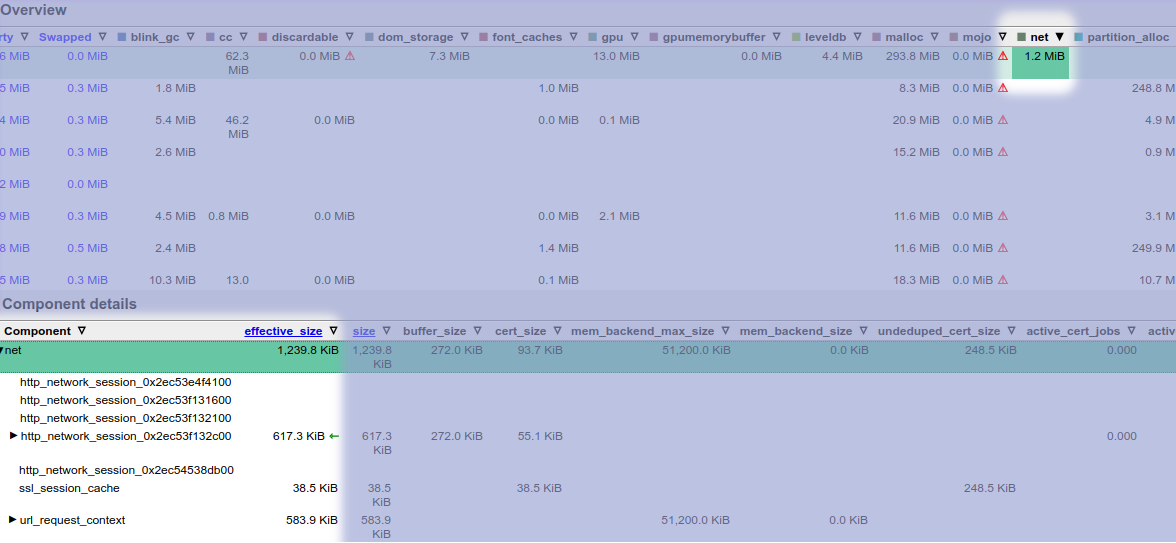This class used to create QUIC streams, but now creates and pools QUIC sessions instead. This rename brings it in line with SpdySessionPool and its `RequestSession` method. This CL has no functional impact. It is a mechanistic rename, performed with `sed`. It avoids renaming existing metrics, preferring continuity of data over accuracy of the name. ``` sed -i 's/quic_stream_factory/quic_session_pool/g;s/QUIC_STREAM_FACTORY/QUIC_SESSION_POOL/g;s/QuicStreamFactory/QuicSessionPool/g' $(git grep -il 'quic.\?stream.\?factory') sed -i 's/quic_stream_request/quic_session_request/g;s/QUIC_STREAM_REQUEST/QUIC_SESSION_REQUEST/g;s/QuicStreamRequest/QuicSessionRequest/g' $(git grep -il 'quic.\?stream.\?request') for f in net/quic/*quic_stream_factory*; do n=$(echo $f | sed -e s/stream/session/g); git mv $f $n; done sed -i 's/Net\.QuicSessionPool/Net.QuicStreamFactory/g' $(git grep -il 'Net.QuicSession' net/ tools/) git cl format ``` Change-Id: I20ceb3d8a0a97cd9c8888bb7414b983b9fe5fa51 Reviewed-on: https://chromium-review.googlesource.com/c/chromium/src/+/5190439 Reviewed-by: Ryan Hamilton <rch@chromium.org> Commit-Queue: Dustin Mitchell <djmitche@chromium.org> Reviewed-by: Elly FJ <ellyjones@chromium.org> Code-Coverage: findit-for-me@appspot.gserviceaccount.com <findit-for-me@appspot.gserviceaccount.com> Reviewed-by: Paul Semel <paulsemel@chromium.org> Reviewed-by: Tibor Goldschwendt <tiborg@chromium.org> Reviewed-by: Matt Menke <mmenke@chromium.org> Reviewed-by: David Schinazi <dschinazi@chromium.org> Cr-Commit-Position: refs/heads/main@{#1248827}
2.8 KiB
Network Stack Memory Tracing
This is an overview of the Net column in MemoryInfra.
[TOC]
Quick Start
To get an overview of total network stack memory usage, select the Browser process' net category and look at effective_size or size column.
Detailed Information
The numbers are reported by the network stack’s MemoryDumpProvider, which is implemented by URLRequestContext class. URLRequestContext calls into major network stack objects (such as HttpNetworkSession, SSLClientSessionCache, HttpCache) to aggregate memory usage numbers. The total number reported in “net” is a lower bound of the memory used by the network stack. It is not intended to be an accurate measurement. Please use heap profiler instead to see all allocations.
URLRequestContext (“url_request_context”)
This is a top-level network stack object used to create url requests. There are several URLRequestContexts in Chrome. See Anatomy of the Network Stack for what these URLRequestContexts are created for. The number of URLRequestContexts increases with the number of profiles.
For a “url_request_context” row, the “object_count” column indicates the number of live URLRequests created by that context.
-
Sub rows
-
HttpCache (“http_cache”)
This cache can be a disk cache (backed by either block file or simple cache backend) or an in-memory cache. An incognito profile, for example, has an in-memory HttpCache. You can tell this by whether mem_backend_size column is present for that particular URLRequestContext.
-
HttpNetworkSession (“http_network_session”)
This network stack object owns socket pools, the HTTP/2 and QUIC session pools. There is usually a 1:1 correspondence from a URLRequestContext to an HttpNetworkSession, but there are exceptions. For example, the “main” URLRequestContext shares the same HttpNetworkSession with “main_media” URLRequestContext and “main_isolated_media” URLRequestContext.
-
Sub rows
-
HttpStreamFactory(“stream_factory”)
This object is an entry to establish HTTP/1.1, HTTP/2 and QUIC connections.
-
SpdySessionPool (“spdy_session_pool”)
This object owns HTTP/2 sessions.
-
QuicSessionPool (“quic_session_pool”)
This object owns QUIC sessions and streams.
-
SSLClientSessionCache (“ssl_session_cache”)
This is a global singleton that caches SSL session objects which retain references to refcounted SSL Certificates.
